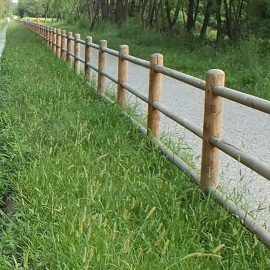Slow pace, a fresh opportunity for reconnecting territories
by Lorenzo BazzocchiAlongside motorways and railways, the longest and faster infrastructure, parallel routes are gaining ground in Europe which, via a means of transport such as bicycles, allow slow and extensive rediscovery of places which for centuries have been features of the geography, economy and even the actual history of the Old Continent. Itineraries which run along the banks of rivers, across mountain ridges and valleys, between canals and aqueducts, and along age-old routes, such as the Via Francigena and Appian Way, “the mother of all roads”.
Many of these routes, already accessible, meet the growing demand for a new form of tourism, leading as a result to a beneficial process of territorial redevelopment. Despite this there is still a lot to be done in Italy. The most obvious paradox comes from the fact that Italy is ribbed by a dense network of motorways and railways such as to guarantee optimal accessibility to almost the entire country, while the idea that infrastructural networks have to be interconnected optimally, also through cycle links, is almost totally lacking.
Cycling routes should however be understood not only as an opportunity for growth of those areas already with a strong tourism mission, but above all as a tool for facilitating public mobility in all territorial contexts, also in order to improve the links between centre and suburbs. In this respect the German case of the Ruhr is exemplary as a strongly industrial region where cycling has become essential in the strategy of redevelopment of the entire territory. Cycle tracks have been built along the industrial canals and rivers to connect, for tourism purposes, important monuments of industrial architecture.
A virtuous case which could inspire a park project extended to the entire territory comprised between the two major cities of Turin and Milan, highlighting an environment where industry, nature, agricultural landscapes and Unesco-safeguarded sites live side by side, as well as infrastructure, built-up areas and degraded areas which still retain extraordinary potential for development.


